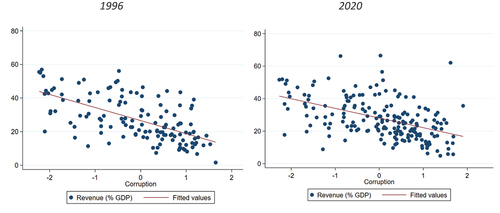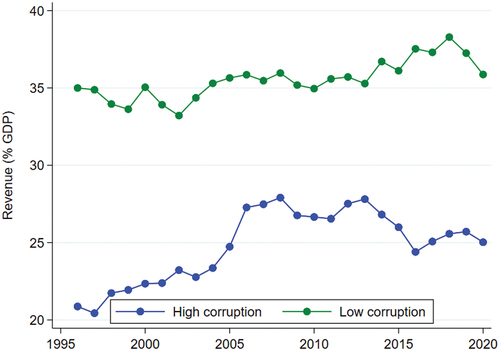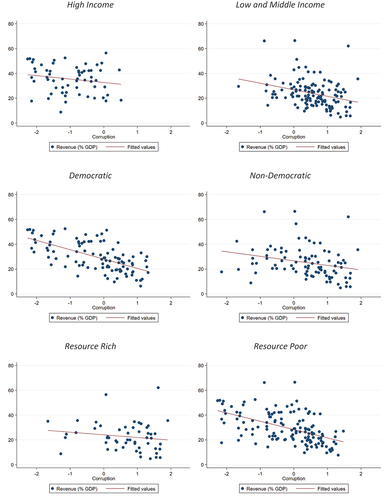Figures & data
Table 1. List of variables and data sources.
Figure 1. Relationship between corruption and revenue in 1996 and 2020.

Figure 2. Revenues in high/low corruption countries over time.

Figure 3. Relationship between corruption and revenue in different country groups, 2020.

Table 2. Regression results—dependent variable: revenue (% GDP).
Table 3. Results for high/low and middle-income countries—dependent variable: revenue (% GDP).
Table 4. Results for democratic/Non-democratic countries—dependent variable: revenue (% GDP).
Table 5. Results for resource-rich/Resource-poor countries—dependent variable: revenue (% GDP).
